 The Rock Mill dam park located in Lancaster Ohio has been restored and the mill wheel has been replaced, it is now the largest working water mill wheel in north America.
The Rock Mill dam park located in Lancaster Ohio has been restored and the mill wheel has been replaced, it is now the largest working water mill wheel in north America.
The first gristmill at this site was built in 1799 by Joseph Loveland and Hezekiah Smith. They also built a store, a distillery, and the Blue Ball Tavern. The available alcohol created disturbances with the Wyandot and Shawnee Indians as well as the settlers. Soon the local community forced Loveland and Smith to leave.
Christian Morehart built the present structure in 1824. Rock Mill was built on top of the blackhand sandstone cliff above the gorge. It stood 3 ½ stories high from the front door level. There were two additional floors below level. The lowest level can be viewed at this link. Here is where Christian Morehart and his employed expert craftsmen set a 26’ overshot waterwheel. The power shaft set inside the lowest level of the building. There he designed the power to be transferred through wooden gears and belts to two sets of millstones. Each stone was seated to either side of the direct line shaft. He owned and operated the mill until his death on June 4, 1859.
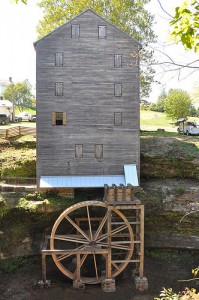 Succeeding Morehart there were numerous owners but the dates of ownership are ambiguous. The following people are some of the owners of Rock Mill between 1859 and 1931: Phillip Homrighouse, John Fore, Solt, Alspaugh Brothers & Fore Company, Ed Alspaugh, Talley, J.P. Gundy and F.H. Barlow, and W.S. Alspaugh. The record of subsequent owners is unknown to this author.
Succeeding Morehart there were numerous owners but the dates of ownership are ambiguous. The following people are some of the owners of Rock Mill between 1859 and 1931: Phillip Homrighouse, John Fore, Solt, Alspaugh Brothers & Fore Company, Ed Alspaugh, Talley, J.P. Gundy and F.H. Barlow, and W.S. Alspaugh. The record of subsequent owners is unknown to this author.
In 1989, Rock Mill stood 5 1/2 stories tall and rested on the impermeable blackhand sandstone foundation. The mill had a frame construction made of white oak with a red tin roof. The lap siding was seriously deteriorated with many sections gone. The mill had seriously deteriorated in 1989 as identified by the pictures. However, we are fortunate that Rock Mill was restored by Fairfield County Historical Parks.
The old mill remained viable for restoration in the 1990s due to two stand fast features. First and far most was the white oak construction of the huge beams which remain standing as part of its restoration. And, secondly, the giant white oak beams were set into the impermeable blackhand sandstone available in the Fairfield County area.
The mill sits at the headwaters of the Hocking River. At this location there is a deep gorge incised by the river in the blackhand sandstone formation that creates a spectacular, scenic setting. The mill is positioned so that 3 1/2 stories rise above the rim of the gorge and 2 stories are below the rim. From the mill level, there is a 50-foot drop to the Hocking River.
Rock Mill was water-powered with a 26’ overshot waterwheel. There was a dam above the 14′ natural waterfall that created the head of water that was channeled to the mill. An incredible millrace was chiseled through solid rock just above the falls in front of the mill. The rock millrace is 30′ long, 18” deep and 3′ wide. The water was transported from the millpond created by the wooden dam through the cut in the rock to the wooden waterwheel by a wooden flume. The original waterwheel and flume have long since been gone, but the carved rock millrace is still beautifully evidenced above the falls.
“Rock Mill functioned as a gristmill and flourmill from 1824 through 1905. Since it ceased operating, the mill has deteriorated. On March 10, 1991, I found the condition of the Rock Mill hopeless. The strong oaken timbers of 1824 are now exposed to the elements of weather because much of the siding is gone. With continued exposure to the elements the building will collapse very soon. Viewing the mill from the river’s side, the right corner beam that supported the building has split and broken. Rock Mill’s future is a crumpled pile of 1824 oak planks and beams in the bottom of the rocky gorge at the headwaters of the Hocking River.
The setting of Rock Mill is so beautiful that you can’t help but appreciate the landscape. Unfortunately, there is a sense of gloom associated with the visit due to Rock Mill’s sad condition. The experience of witnessing the gorge’s precipice and the millrace chiseled in rock is worth the visit. You will also be rewarded with a covered bridge at the site of Old Rock Mill.” (written 1991)
Wow! What a year can make. Fairfield County Historical Parks, employees and volunteers dedicated themselves to finding monies and local craftsmen to stabilize the mill initially (1991) and subsequently restored the structure in its completion in 2010. You have obviously seen the restored mill on this page. It is beautiful. Tremendous efforts must continue to keep Rock Mill’s heritage available to the public. Additional construction is still needed to restore several levels in the mill, the waterwheel and additional equipment. If you would like to donate funds for Rock Mill contact: Historical Director, Fairfield County Historical Parks, 407 East Main Street, Lancaster, Ohio 43130.
(Rock Mill Lancaster, Ohio, Brochure 2011; Fairfield County Historical Parks Pocket Guide 2011, Lancaster, Ohio; Lancaster and Fairfield County, Ohio; ”Old Mills and Millers.”; ”Old Rock Mill.” The Columbus Dispatch Magazine; ”Old Rock Mill.” Museum Echoes; ”Rock Mill Farm”).

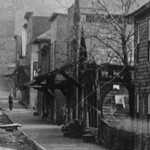
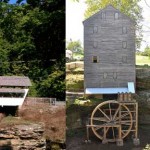
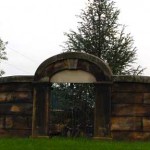
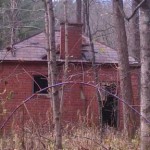
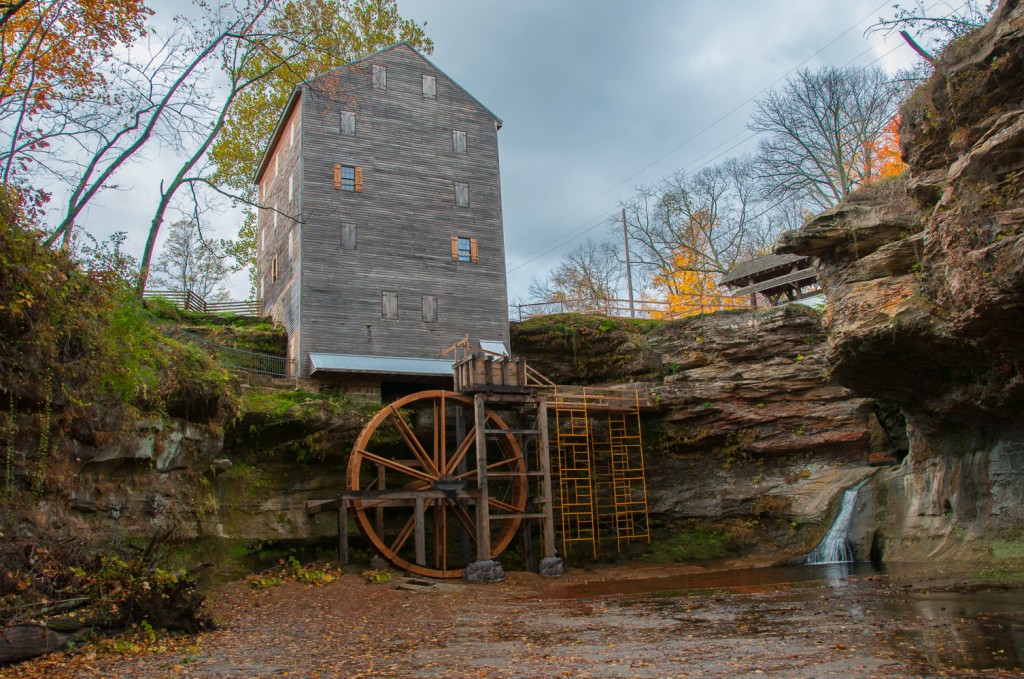


























Follow me on Social Media